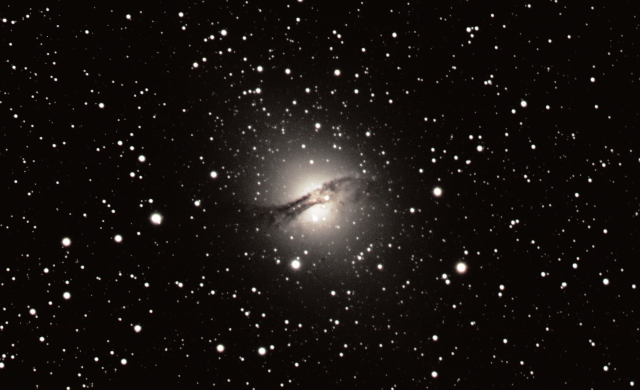Today I've got a picture of an amazing galaxy for you to enjoy, Centarus A. I took this picture a little over a year ago. Centaurus A is a really strange beast in a universe full of exotic galaxies. You know, you'd think I wouldn't be continually surprised at the fact that the pictures I take look like the ones I see that other people have taken, but for some reason I'm always pleasantly surprised that my pictures look just the way I expect an object to look.
 |
| Centaurus A, an unusual elliptical galaxy, in Centaurus. |
If it weren't for that highly unusual dust lane running across it, Centaurus A would appear to be a fairly normal elliptical (or possibly lenticular) galaxy. But that dust lane immediately transforms it into a galaxy of much interest to astronomers. That dust is there because Centaurus A is actually two galaxies undergoing a collision; an elliptical galaxy, and a spiral galaxy like our Milky Way. The dust acts as a highly efficient blocker of light, causing the dark stripe you see in the image.
 |
| A closer look at the galaxy itself. |
Centaurus A lights up the sky in radio wavelengths due to two humongous radio-producing lobes coming from both ends (the upper left and lower right in this orientation). These lobes come from bits of gas accelerated to about half the speed of light by a supermassive black hole that resides in the center of the composite galaxy and extend for hundreds of thousands of light years in space. If we could see these lobes with our eyes, each of them would appear several times larger than the full Moon on the sky (Centarus A itself is about ⅔ the size of the full Moon).



